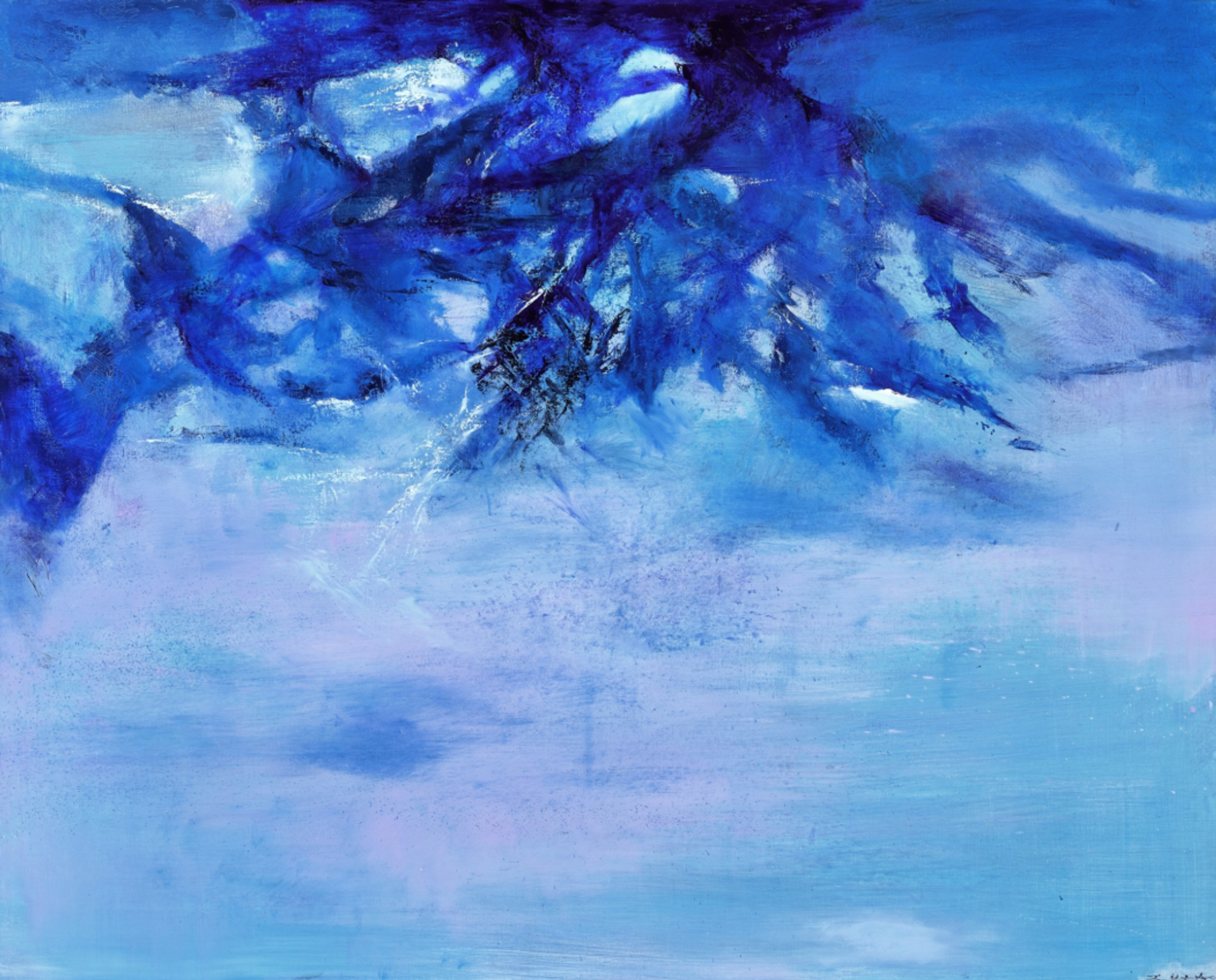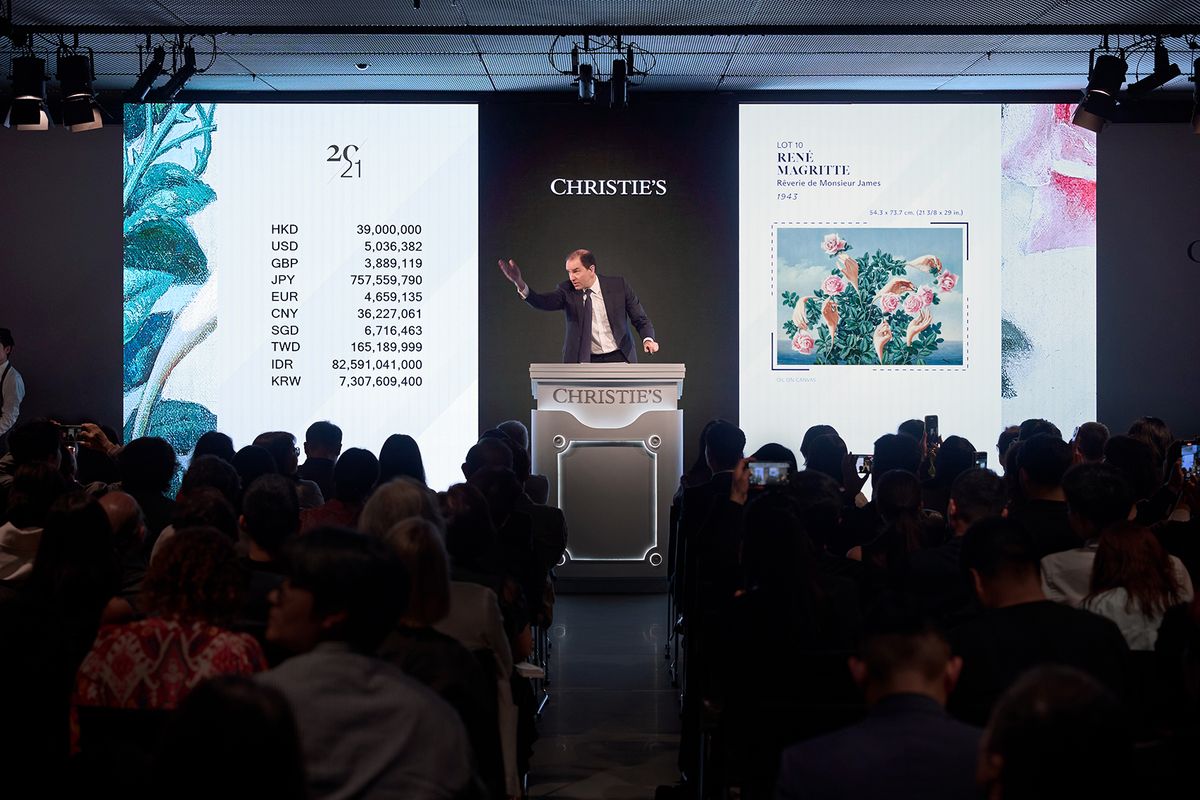Christie’s and Sotheby’s went head-to-head in Hong Kong last week, creating an auction season around the city’s Art Basel fair for the first time, which helped to boost the energy levels in the salerooms.
Each auction house brought slimmer evening sales than the last time they were here (Christie’s in September, Sotheby’s in November), with fewer big-hitting blue-chip works. But their auctions made solid, within-estimate totals, and gave some reassurance that this region’s collectors, particularly those from China, are still in the game, if not the big spenders they once were.
The new timing meant more in-person bidding and increased activity all round, said the auctioneers at each sale, Adrien Meyer at Christie’s and Alexander Branczik at Sotheby’s. It also gave the opportunity to compare and contrast the houses’ divergent strategies as each have opened their own distinct and pricey Hong Kong premises in the past year.
At Christie’s, all is hushed elegance among the corporate white orchids of the Henderson Building, with spectacular city views for those who are in the know. Sotheby’s is much more public facing, with swanky showrooms that slot perfectly into the luxury fashion stores of the Landmark Building, while its dimly-lit and black-walled lower level saleroom, which doubles up as an exhibition venue, has the feel of a cavernous night club.
Christie’s led the field on 28 March, offering 41 lots for HK$457.3m (HK$560m with fees), with two works withdrawn and including two unsold. The next evening, Sotheby’s made $236.9m (HK$297.6m with fees) from 42 lots with four withdrawn and two unsold. Their with-premium totals last time around were $1bn and $410m respectively.
Overall though, the sales felt more grounded, with depth of bidding particularly evident at Sotheby’s, where buyers seemed more confident at lower price levels. The performance of each house’s top lots summed up the difference. At Sotheby’s, Marc Chagall’s early, swirly Fleurs de printemps (La Cruche aux fleurs de printemps) (1930) didn’t have any guarantee and sold at its high estimate of HK$28m (HK$34.5m with fees) with three keen telephone bidders in the end game before it sold via Jen Hua, Sotheby’s chairman of China.
At Christie’s, Jean-Michel Basquiat’s high-impact, deep-red-backed Sabato por la Noche (Saturday Night) (1984), covered by a third-party guarantor, hammered at its low estimate of HK$95m to Emmanuelle Chan, Christie's Hong Kong-based specialist (HK$112.6m with fees). There was a sense this could have gone higher—its top estimate was HK$125m—though it still beat the HK$84m (including fees) spent by its Asian seller for the work in 2019. Plus, as Christie’s Hong Kong president Francis Belin pointed out, this is currently the highest price at auction this calendar year (with next month’s highest wattage auctions in New York still to come).

Zao Wou-Ki, 31.08.2001 - 09.09.2002
China’s Modernists, whose work had been hit by the slowdown in Chinese spending, seemed to have settled, albeit at much lower levels than in their glory days. There was a sense that three works by the ethereal abstract painter Zao Wou-Ki were too many at once in Christie’s relatively small sale, though all sold, topped by his 28.8.67 (1967) at its low estimate of HK$40m (HK$48.8m with fees). At Sotheby’s, a Zao painting (from 2000, estimated at HK$5m-HK$8m, was among the withdrawn lots, though another, 31.08.2001-09.09.2002 sold at the low end of its estimate for HK$11.5m (HK$14.4m with fees)—Zao’s auction record stands at HK$510m, made in the boom year of 2018.
At Christie’s, No.269 (1968), a glowering abstract by another once-hot Modernist Chu Teh-Chun and bought for a fee-inclusive HK$21.7mn in 2018, sold for less than half on Friday (HK$10.1m with fees). We are clearly not in Kansas anymore. Cristian Albu, Christie’s head of 20th and 21st century art for Asia Pacific, described their sale overall as “responsibly priced for this market”.
There were yet some pleasant surprises, notably for lower-value works and for Southeast Asian artists who seemed well-supported by collectors bidding through their local representatives. At Sotheby’s, two engaging works by the 20th-century Vietnamese painter Mai Trung Thu sold comfortably above estimates: Joie de Vivre I (1963) for HK$5.5m (HK$7m with fees) and Instant Musica (1946) for HK$8m ($10.1m with fees). At Christie’s sale, two of nine works that sold above estimate were by Thai artists: the spooky Mahānāradakassapa Jātaka by Thawan Duchanee (1939-2014) sold for HK$3m (HK$3.8m with fees), while Flyte (2023), by the surreal, contemporary painter Gongkan—the moniker of Kantapon Metheekul—sold for HK$500,000 (HK$630,000 with fees).
The auction houses still have their work cut out in Hong Kong, but last week’s efforts felt like a solid foundation. The adviser Patti Wong said that there was “a lot of good energy” at Art Basel Hong Kong this year, “with noticeably more interesting offering and better attendance.” Much of this spilled into the auction rooms which, she says, backfilled an “absence of good secondary material at the fair.” At the auctions, she says, “sell through rates were excellent and hopefully that will bring international consignments back to Hong Kong, something that the houses need to work at.” Branczik summarises: "It was a tough season to gather, you can only sell what you get, but Hong Kong is back.”


